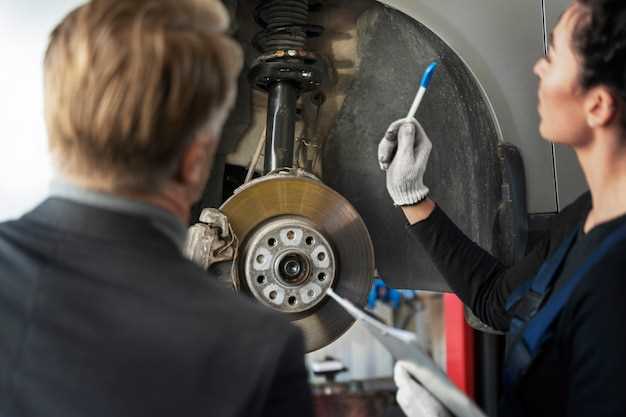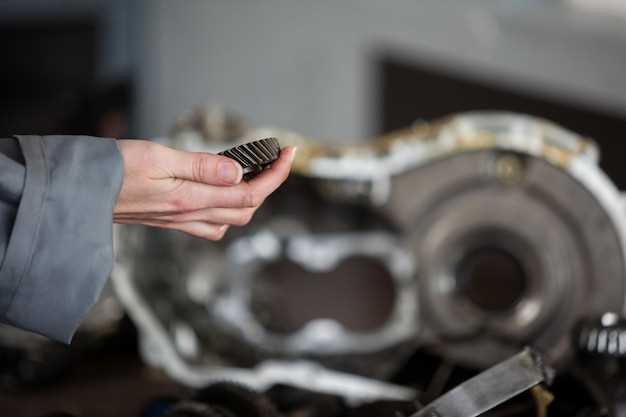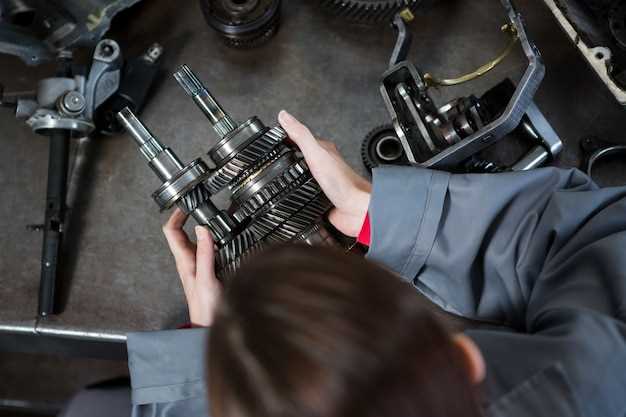
When it comes to the functionality of a vehicle’s clutch system, understanding the role of the master and slave cylinders is crucial. These components work together in a hydraulic system to facilitate smooth gear transitions and overall vehicle performance. When issues arise within these cylinders, drivers may experience difficulties with the clutch pedal and notice erratic engagement, leading to potential safety hazards on the road.
Identifying problems with the clutch master or slave cylinder often starts with observing the pedal behavior. A soft or spongy feel can indicate air in the hydraulic line or fluid leaks, suggesting that either cylinder may require inspection or replacement. Understanding the symptoms early on can save drivers time and money while ensuring reliable vehicle operation.
In this article, we will explore the common symptoms associated with faulty master and slave cylinders, delve into diagnostic techniques, and discuss effective solutions for restoring proper hydraulic function to your clutch system. With the right knowledge, addressing these issues can be straightforward, allowing for a smooth and safe driving experience.
Identifying Symptoms of Clutch Hydraulics Failure

When clutch hydraulics fail, several symptoms may arise, indicating that the master or slave cylinder is not functioning correctly. Recognizing these signs is crucial for timely intervention and preventing further damage. Here are common symptoms to watch for:
- Soft or Spongy Clutch Pedal: If the clutch pedal feels soft or spongy, it may suggest inadequate hydraulic pressure due to leaks or air in the system.
- High Clutch Pedal Engagement Point: If the clutch engages higher than normal, it could indicate issues with the master or slave cylinder, affecting pressure distribution.
- Difficulty Shifting Gears: If you experience difficulty shifting gears, this may be a result of insufficient pressure in the hydraulic system, preventing proper disengagement of the clutch.
- Pedal Stays on the Floor: A situation where the clutch pedal remains on the floor after pressing it can signify a complete hydraulic failure. This requires immediate attention.
- Unusual Noises: Grinding or whining noises when engaging the clutch can be a sign of hydraulic issues, often linked to low fluid levels or failing components.
- Fluid Leaks: Visible fluid leaks around the master or slave cylinder indicate a loss of hydraulic fluid, leading to pressure drop and failure of the clutch system.
Monitoring these symptoms closely can help in diagnosing clutch hydraulics failure early, allowing for appropriate remedial action before further complications arise.
Measuring Pedal Pressure for Accurate Diagnosis
Measuring pedal pressure is a crucial step in diagnosing clutch master and slave cylinder issues. The pressure exerted on the clutch pedal can provide significant insights into the system’s functionality. A standard pressure gauge or a specific pedal force measurement tool can help in obtaining accurate readings.
To begin, ensure that the vehicle is in a safe and stable position. With the engine off, press the clutch pedal down and note the amount of force required to fully engage it. Typically, a properly functioning clutch system will require a consistent pressure of around 20 to 30 pounds, depending on the vehicle model.
If the pedal feels excessively soft or spongy, it may indicate air in the hydraulic system, which can affect pedal pressure and overall clutch performance. A sudden drop in resistance may point to a failed master or slave cylinder. Conversely, if significant force is needed to push the pedal, it may suggest issues like clutch binding or a stiff hydraulic line.
After conducting the initial measurement, compare the results with the manufacturer’s specifications. If there are discrepancies, further inspection of the clutch hydraulic system is necessary. Check for leaks, damaged components, or signs of wear that could impede proper clutch operation.
Consistent regular measurements of pedal pressure can also help in tracking the deterioration of the clutch system over time, allowing for proactive maintenance before a complete failure occurs.
Testing the Clutch Master Cylinder Performance

To effectively diagnose the performance of the clutch master cylinder, it is essential to assess the pressure within the hydraulic system. This can be done by measuring the hydraulic fluid level in the reservoir and checking for any leaks around the master cylinder. A drop in fluid level may indicate a failure in the system.
Start the test by pushing the clutch pedal down slowly and observing how it engages. If the pedal feels spongy or goes to the floor without resistance, this may suggest a problem with the master cylinder’s ability to maintain pressure. In a properly functioning system, the pedal should have a firm feel and return promptly to its original position.
Next, inspect the hydraulic lines for any signs of damage or leaks that could affect the master cylinder’s performance. A compromised line may impact the pressure and overall functionality. Additionally, listen for unusual noises when the pedal is pressed, as this could indicate internal issues within the master cylinder.
Another effective method to test the master cylinder is to check the operation of the slave cylinder. If the clutch engages but fails to disengage properly, the issue may stem from inadequate pressure generated by the master cylinder. This can be further confirmed by measuring the throw of the slave cylinder to ensure it matches manufacturer specifications.
Lastly, consider performing a pressure test using a gauge to measure the hydraulic pressure output. A significant drop in pressure when the pedal is depressed can confirm that the master cylinder is not functioning optimally. By closely monitoring these aspects, you can accurately determine the performance of the clutch master cylinder and identify necessary repairs or replacements.
Assessing the Functionality of the Slave Cylinder
To ensure a vehicle’s clutch system operates efficiently, it is crucial to assess the functionality of the slave cylinder. This component plays a significant role in the hydraulics of the clutch mechanism, transferring pressure from the master cylinder to disengage the clutch. If the slave cylinder fails, it can lead to difficulties in engaging or disengaging gears, resulting in poor vehicle performance.
To evaluate the effectiveness of the slave cylinder, consider the following steps:
| Assessment Step | Description |
|---|---|
| Visual Inspection | Check for any leaks or signs of wear around the slave cylinder. Look for fluid accumulation or corrosion that may indicate failure. |
| Pedal Feel | Press the clutch pedal and observe its resistance. A soft or spongy pedal can indicate air in the hydraulic line or issues with the slave cylinder. |
| Fluid Level Check | Inspect the hydraulic fluid level in the reservoir. Low fluid levels may suggest a leak in the slave cylinder or the master cylinder. |
| Leak Test | Examine the surrounding area for any hydraulic fluid leaking from the slave cylinder. A leak will compromise the pressure necessary for clutch operation. |
| Pressure Test | Utilize a pressure gauge to measure the hydraulic pressure generated when the clutch pedal is pressed. Insufficient pressure indicates a malfunctioning slave cylinder. |
By systematically evaluating these aspects, you can determine if the slave cylinder is functioning properly or if it requires replacement. Proper assessment not only ensures optimal performance but also prolongs the lifespan of the vehicle’s clutch system.
Checking for Leaks in the Clutch Hydraulic System
To ensure the optimal functioning of the clutch hydraulic system, it is essential to check for any leaks that may affect the performance of the clutch pedal. A compromised hydraulic system can lead to insufficient pressure generation, resulting in difficulty engaging or disengaging the gears.
Start by inspecting the clutch master cylinder and slave cylinder for any signs of fluid leakage. Look for puddles or wet spots around these components, as well as any signs of fluid residue on the surfaces. A leaking master cylinder can lead to a decrease in pressure at the clutch pedal, causing an unresponsive or spongy feel.
Next, examine the hydraulic lines connecting the master and slave cylinders. These hoses can develop cracks or pinholes over time, leading to fluid loss. Carefully trace the lines for any visible damage or wetness. If fluid is spotted along the lines, it indicates that a leak is likely present.
Additionally, check the fluid reservoir for any drops in the fluid level. A lower-than-normal fluid level may not only signify a leak but also indicate other potential issues within the hydraulic system. It is crucial to maintain the proper fluid level to ensure adequate pressure is maintained within the system.
Lastly, if no visible leaks are found but pressure issues persist, perform a thorough system bleed to remove any air trapped in the hydraulic lines. Air within the system can significantly compromise pressure and affect the functioning of the clutch pedal. Regular maintenance and checks for leaks will enhance the reliability of the clutch hydraulic system and prolong its lifespan.
Interpreting Diagnostic Codes Related to Clutch Hydraulics
When diagnosing issues within clutch hydraulics, understanding diagnostic codes is essential for identifying underlying problems. These codes are generated by the vehicle’s onboard diagnostics (OBD) system and can indicate malfunctions in the clutch master cylinder, slave cylinder, or associated hydraulic components.
Common diagnostic codes related to clutch hydraulics often begin with the letters P, which stand for Powertrain. Among these, codes like P0571 can signal problems with clutch pedal position sensors. A faulty sensor may lead to improper engagement or disengagement of the clutch, causing performance issues.
Furthermore, codes such as P0980 indicate a potential fault in the hydraulic control system linked to the clutch. This could imply failures in the hydraulic lines or a breach affecting the pressure needed for proper clutch operation. Insufficient fluid pressure can lead to difficulties in pedal response or a sticking clutch.
Additionally, identifying codes that suggest low fluid levels or leaks is crucial. Codes related to hydraulic system pressure (like P0868) can denote low pressure in the clutch hydraulics, potentially stemming from worn seals or air trapped in the system. These conditions not only affect clutch performance but can also lead to complete failure if not addressed promptly.
Interpreting these diagnostic codes, combined with a thorough physical inspection of the hydraulic components, enables technicians to effectively pinpoint the source of clutch-related problems. By addressing these issues based on the diagnostic feedback, one can ensure the reliability and functionality of the clutch system.










